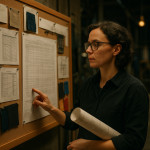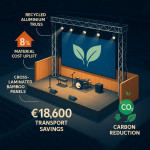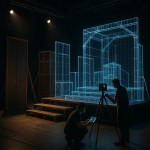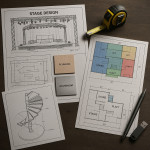Stage scenography budgets decoded: cost tiers and savings every producer values
Wondering how much a striking stage set really costs? This guide breaks down stage scenography budgets into clear cost tiers, reveals hidden savings, and equips producers with negotiation hacks that protect creativity and cash flow alike.
Why budgeting for stage scenography feels opaque
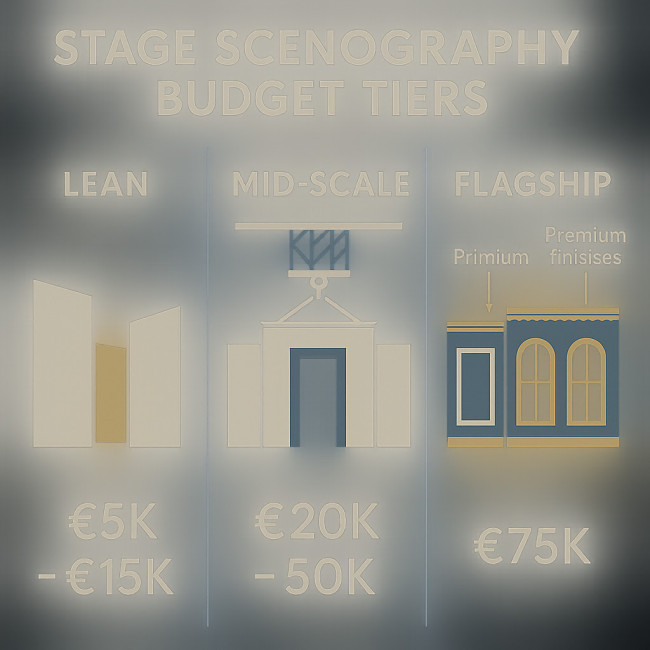
Set design pulls together architecture, engineering, lighting, sound and graphics—five disciplines with wildly different rate cards. Add last-minute director changes and freight surcharges and you get the infamous “sceno-surprise” on the final invoice. Mastering stage scenography budgets means mapping every cost driver early and locking suppliers into fair, transparent quotes.
The three budget tiers producers meet most often
| Tier | Typical Show Type | Budget Range (€) | Key Cost Drivers | Savings Levers |
|---|---|---|---|---|
| Lean | Fringe theatre, touring gigs | 8 000 – 25 000 | Modular flats, recycled props, volunteer crew | Local material rentals, shared transport |
| Mid-Scale | Off-Broadway, corporate galas | 25 000 – 120 000 | Custom carpentry, basic automation, union crew | Early design freeze, bundle hires with lighting |
| Flagship | Broadway, arena tours, televised events | 120 000 – 500 000+ | CNC-cut structures, advanced motion rigging, premium finishes | Digital twins for pre-vis, multi-show amortisation |
Budget allocation: where the money really goes
Across all tiers, five budget lines dominate: design labour, fabrication, technical rentals, freight & storage, and contingency. The chart below visualises an average mid-scale show.
Source : SFI Global Theatre Survey 2024
Seven proven tactics to keep scenography on budget
- Freeze the design by 70 % of the schedule. Each extra revision after that point inflates fabrication by an average 12 %.
- Bundle trades. Hiring a scenographer who also coordinates lighting plans—see multi-sensory coordination grids—removes agency mark-ups.
- Use digital twins. Virtual walk-throughs catch rigging clashes before steel is cut. Explore workflows in scan-to-build loops.
- Prioritise reusable modules. What looks custom can still tour: flats trimmed to fit standard truck lengths save €3 000 per move.
- Negotiate workshop off-cuts. Scenic shops often discount leftover plywood by 40 % if you book early in their production calendar.
- Lock crew day-rates for the run. Multi-day blocks beat piecemeal calls. Templates in production-note briefs help.
- Switch to eco-smart materials. Sustainable boards drop waste fees; dive deeper in eco-smart scenography.
Hidden savings producers overlook
Insurance rebates for certified safety plans
Insurers cut premiums up to 15 % when you adopt the latest stage safety regulations. Share the certificate with underwriters before production week.
Collective freight miles
Pairing your set with another touring production travelling the same route can halve load-out costs. Many scenic shops list upcoming routes on their bulletin boards or on networks like the Artfolio spatial-designers hub.
Tax incentives for local fabrication
Several regions offer 10–30 % rebates when fabrication spends stay within state lines. Ask workshops for split invoices that highlight eligible labour.
Checklist: information your scenographer needs to quote accurately
- Exact stage dimensions, load limits and fly-tower height
- Tour schedule & venue access windows
- Preferred material restrictions (fire rating, sustainability)
- Special effects or automation specs
- Storage plan between runs
- Deadline for design lock
Case example: stretching a mid-scale budget
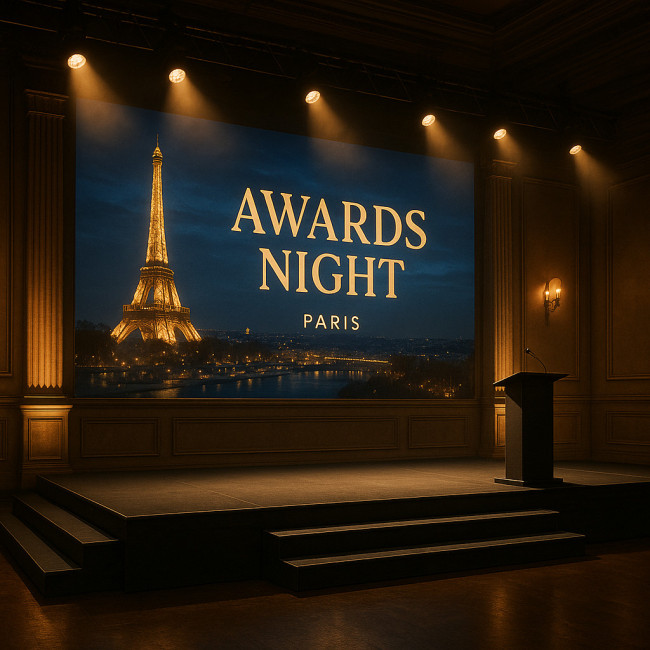
A corporate awards night in Paris initially quoted €80 000 for a custom set. By swapping solid-wood risers for aluminium decks and adopting projection mapping over printed backdrops, the producer shaved €18 500. The scenographer reused scenic flats from a prior gala, trimming and repainting them in-house. Total load-out weight fell 1.2 tons, cutting freight by 25 %.
Interactive quiz: test your budget savvy
FAQ
- How much contingency should I set aside?
- Allocate 8–12 % of the scenography budget. Complex automation may push that to 15 %.
- Can digital pre-visualisation fully replace physical maquettes?
- For most shows, yes. High-fidelity VR walk-throughs reduce prototype spend, but miniature models still help when tactile surfaces influence costuming.
- What's the cheapest way to insure a touring set?
- Bundle insurance policies with the freight forwarder and present certified safety documentation for rebates.
- Is buying gear cheaper than renting for a multi-year run?
- If the item's rental cost exceeds 40 % of its purchase price per year, ownership plus resale value usually wins.
Key takeaways
- Budget tiers—lean, mid-scale, flagship—guide initial expectation setting.
- Five lines—labour, fabrication, rentals, logistics, contingency—consume 90 % of spend.
- Early design lock, digital twins and material swaps unlock double-digit savings.
- Always factor safety certifications and tax incentives; both cut hidden costs.
Ready to brief your scenographer? Download the advanced cost spreadsheet mentioned in documentation packs that win bids and step into negotiations with confidence.
CTA: Need a bespoke budget breakdown for your next show? Contact our team and turn cost uncertainty into creative freedom.
